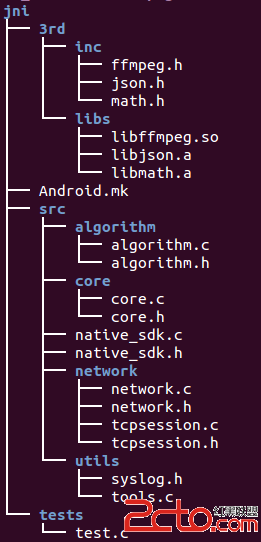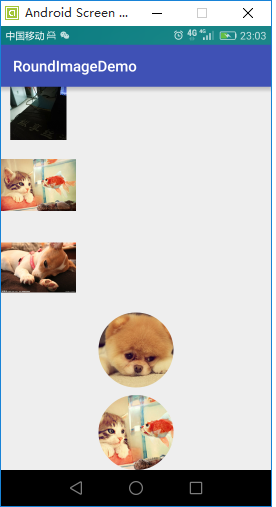編輯:關於android開發
1、自定義ViewGroup
1 /**
2 * Created by Administrator on 2016/2/26.
3 *
4 * --------自動換行的ViewGroup-----------
5 */
6 public class LineWrapLayout extends ViewGroup {
7 private static final boolean DEBUG = true;
8 private static final String TAG = "AutoLineFeedLayout";
9
10 /**
11 * 左間距
12 */
13 private int paddingLeft = 10;
14 /**
15 * 右間距
16 */
17 private int paddingRight = 10;
18 /**
19 *
20 */
21 private int paddingTop = 10;
22 /**
23 *
24 */
25 private int paddingBottom = 10;
26
27 /**
28 * 水平方向間距
29 */
30 private int horizontalSpace = 10;
31 /**
32 * 行間距
33 */
34 private int verticalSpace = 5;
35
36
37 private List<Integer> listX;
38 private List<Integer> listY;
39
40 public LineWrapLayout(Context context) {
41 super(context);
42
43 }
44 public LineWrapLayout(Context context, AttributeSet attrs) {
45 super(context, attrs);
46 init(attrs);
47 }
48
49 public LineWrapLayout(Context context, AttributeSet attrs, int defStyle) {
50 super(context, attrs, defStyle);
51 init(attrs);
52 }
53
54
55 @Override
56 protected void onLayout(boolean changed, int l, int t, int r, int b) {
57 if(DEBUG) Log.d(TAG, "--- onLayout changed :" + changed + " l :" + l + ",t :" + t + ",r :" + r + ",b :" + b);
58 int count = getChildCount();
59 int width = getWidth();
60 Log.i(TAG, "寬度 :"+width);
61
62
63 int startOffsetX = paddingLeft;// 橫坐標開始
64 int startOffsety = 0;//縱坐標開始
65 int rowCount = 1;
66
67 int preEndOffsetX = startOffsetX;
68
69 for (int i = 0; i < count; i++) {
70 final View childView = getChildAt(i);
71
72 int w = childView.getMeasuredWidth();
73 int h = childView.getMeasuredHeight();
74
75 int x = listX.get(i);
76 int y = listY.get(i);
77
78 // 布局子控件
79 childView.layout(x, y, x + w, y + h);
80 }
81 }
82 @Override
83 protected void onMeasure(int widthMeasureSpec, int heightMeasureSpec) {
84 if(DEBUG) Log.v(TAG, "--- onMeasure()");
85
86 int count = getChildCount();
87 int width = measureWidth(widthMeasureSpec);
88 Log.i(TAG, "寬度 :"+width);
89
90
91 int startOffsetX = paddingLeft;// 橫坐標開始
92 int startOffsety = 0+paddingTop;//縱坐標開始
93 int rowCount = 1;
94
95 int preEndOffsetX = startOffsetX;
96
97 listX.clear();
98 listY.clear();
99 for (int i = 0; i < count; i++) {
100 Log.v(TAG, "----");
101 final View childView = getChildAt(i);
102 // 設置子空間Child的寬高
103 childView.measure(0,0);
104 /* 獲取子控件Child的寬高 */
105 int childWidth = childView.getMeasuredWidth();
106 int childHeight = childView.getMeasuredHeight();
107 Log.v(TAG, "childWidth :"+childWidth+" childHeight :"+childHeight);
108 preEndOffsetX = startOffsetX + childWidth /*+ CHILD_MARGIN*/;
109 //TODO [yaojian]margin屬性?
110 if (preEndOffsetX > width - paddingRight ) {
111 if (startOffsetX > paddingLeft) {
112 /* 換行 */
113 startOffsetX = paddingLeft;
114 startOffsety += childHeight+verticalSpace;
115 rowCount++;
116 }
117 }
118 Log.d(TAG, "measure child :"+startOffsetX+", "+startOffsety+", "+preEndOffsetX+", "+(startOffsety+childHeight));
119 listX.add(startOffsetX);
120 listY.add(startOffsety);
121
122 // childView.layout(startOffsetX, startOffsety, preEndOffsetX, startOffsety+childHeight);
123 startOffsetX = startOffsetX + childWidth + horizontalSpace;
124 }
125 int lastLineHeight = 0;
126 View lastChild = getChildAt(count-1);
127 if(null != lastChild){
128 lastLineHeight = lastChild.getMeasuredHeight();
129 }
130 setMeasuredDimension(measureWidth(widthMeasureSpec), startOffsety+lastLineHeight+paddingBottom);
131 // super.onMeasure(widthMeasureSpec, heightMeasureSpec);
132
133 // 注意setMeasuredDimension和resolveSize的用法
134 // setMeasuredDimension(resolveSize(measuredWidth, widthMeasureSpec),
135 // resolveSize(top, heightMeasureSpec));
136 }
137
138 private int measureWidth(int measureSpec) {
139 int specMode = MeasureSpec.getMode(measureSpec);
140 int specSize = MeasureSpec.getSize(measureSpec);
141
142
143 // Default size if no limits are specified.
144 int result = 400;
145
146 if (specMode == MeasureSpec.AT_MOST) {
147 // Calculate the ideal size of your control
148 // within this maximum size.
149 // If your control fills the available space
150 // return the outer bound.
151 result = specSize;
152 } else if (specMode == MeasureSpec.EXACTLY) {
153 // If your control can fit within these bounds return that value.
154 result = specSize;
155 }
156 return result;
157 }
158
159 private void init(AttributeSet attrs) {
160 TypedArray attrArray = getContext().obtainStyledAttributes(attrs, R.styleable.AutoLineFeedLayout);
161 int attrCount = attrArray.getIndexCount();
162 for (int i = 0; i < attrCount; i++) {
163 int attrId = attrArray.getIndex(i);
164 switch (attrId) {
165 case R.styleable.AutoLineFeedLayout_horizontalSpacing:{
166 float dimen = attrArray.getDimension(attrId, 0);
167 horizontalSpace = (int) dimen;
168 }
169 break;
170 case R.styleable.AutoLineFeedLayout_verticalSpacing:{
171 float dimen = attrArray.getDimension(attrId, 0);
172 verticalSpace = (int) dimen;
173 }
174 break;
175 case R.styleable.AutoLineFeedLayout_paddingBottom:{
176 float dimen = attrArray.getDimension(attrId, 0);
177 paddingBottom = (int) dimen;
178 }
179 break;
180 case R.styleable.AutoLineFeedLayout_paddingLeft:{
181 float dimen = attrArray.getDimension(attrId, 0);
182 paddingLeft = (int) dimen;
183 }
184 break;
185 case R.styleable.AutoLineFeedLayout_paddingRight:{
186 float dimen = attrArray.getDimension(attrId, 0);
187 paddingRight = (int) dimen;
188 }
189 break;
190 case R.styleable.AutoLineFeedLayout_paddingTop:{
191 float dimen = attrArray.getDimension(attrId, 0);
192 paddingTop = (int) dimen;
193 }
194 break;
195 case R.styleable.AutoLineFeedLayout_debug:{
196
197 }
198 break;
199
200 default:
201 break;
202 }
203
204 }
205
206 listX = new ArrayList<Integer>();
207 listY = new ArrayList<Integer>();
208 }
209 }
2、有一部分自定義屬性可供使用 attrs.xml
<declare-styleable name="AutoLineFeedLayout">
<attr name="debug" format="boolean"></attr>
<attr name="paddingLeft" format="reference|dimension"/>
<attr name="paddingRight" format="reference|dimension"/>
<attr name="paddingTop" format="reference|dimension"/>
<attr name="paddingBottom" format="reference|dimension"/>
<attr name="verticalSpacing" format="reference|dimension"/>
<attr name="horizontalSpacing" format="reference|dimension"/>
</declare-styleable>
3、在布局文件中和普通ViewGroup使用相同
4、在Activity中動態添加View或者ViewGroup
for (int i = 0;i < myData.getList().length;i++){
View child = View.inflate(ZhuanTiActivity.this,R.layout.item_mygridview_layout,null);
TextView textView = (TextView) child.findViewById(R.id.tv_title_item);
textView.setText(myData.getList()[i].getName());
textView.setTextColor(Color.argb(255, colorR, colorG, colorB));
textView.setOnClickListener(new View.OnClickListener() {
@Override
public void onClick(View v) {
Log.d("aaa",textView.getText());
}
});
custom_index_zhuanTiActivity.addView(child);
}
 android:Activity數據傳遞之對象(Serializable)
android:Activity數據傳遞之對象(Serializable)
android:Activity數據傳遞之對象(Serializable) Activity數據傳遞之基本數據類型在這篇文章中,我寫了通過putExtra()方法在a
 Android開發實踐:Android.mk模板
Android開發實踐:Android.mk模板
Android開發實踐:Android.mk模板 關於Android NDK開發的文章已經比較多了,我的博客中也分享了很多NDK開發相關經驗和技巧,今天簡單寫了一個 An
 ImageView學習,imageview
ImageView學習,imageview
ImageView學習,imageview package liu.roundimagedemo.view; import android.conten
 Android 操作系統的內存回收機制
Android 操作系統的內存回收機制
Android 操作系統的內存回收機制 Android APP 的運行環境 Android 是一款基於 Linux 內核,面向移動終端的操作系統。為適應其作